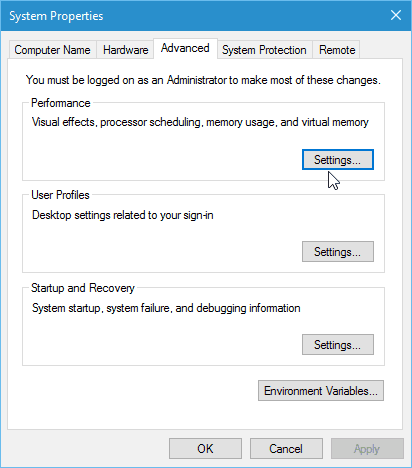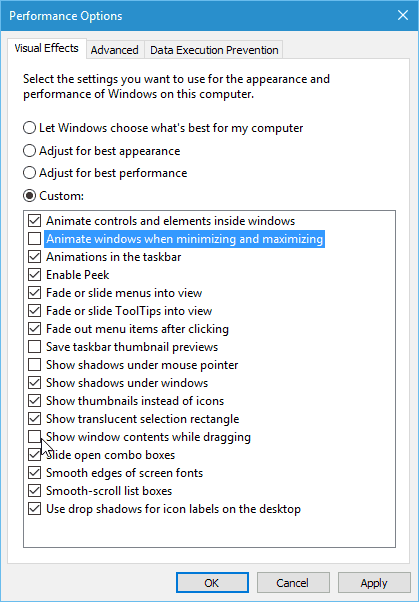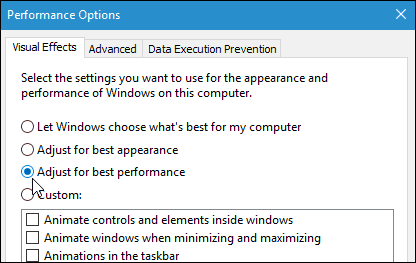Turn Off Visual Effects
Click Start and type: advanced system settings and choose View advanced system settings from the results at the top or just hit Enter.
Next, click Settings in the Performance section.
Here is where you can uncheck different visual effects that take up extra resources. From the list, there are two things I always uncheck to make the UI more responsive.
Animate windows when minimizing and maximizing Show window content while dragging
The more you disable, the more responsive the interface will be, especially on older hardware. If you don’t care about any “eye candy” you might want to disable everything. To do that, just select the Adjust for best performance option.
These settings have been available in Windows since the XP days, but they are often overlooked. During the Windows Vista era, turning off visual effects was a favorite performance tweak because it was so resource intensive, but it can still work today with Windows 10. Give it a try and see for yourself how much snappier Windows feels after making the adjustments. These are just a couple of simple tips to improve performance. Which settings do you tweak to make Windows run better? Let us know in the comments below. Comment Name * Email *
Δ Save my name and email and send me emails as new comments are made to this post.




